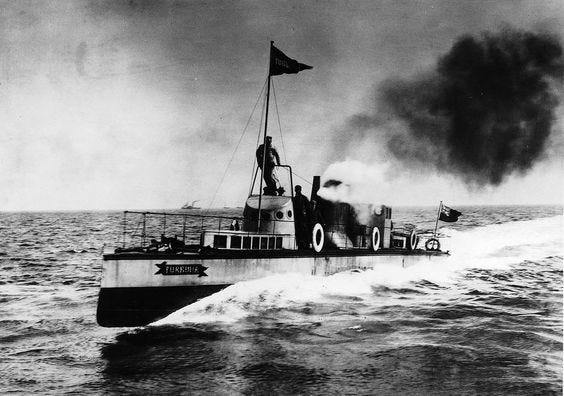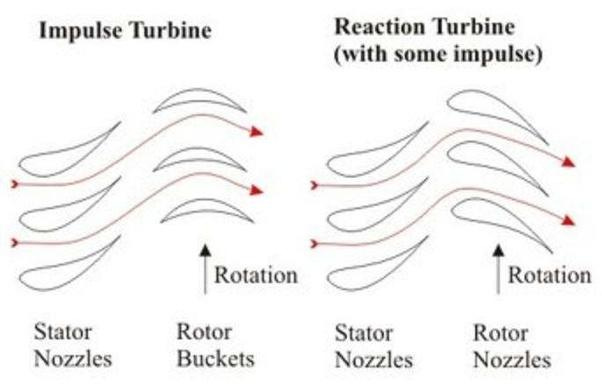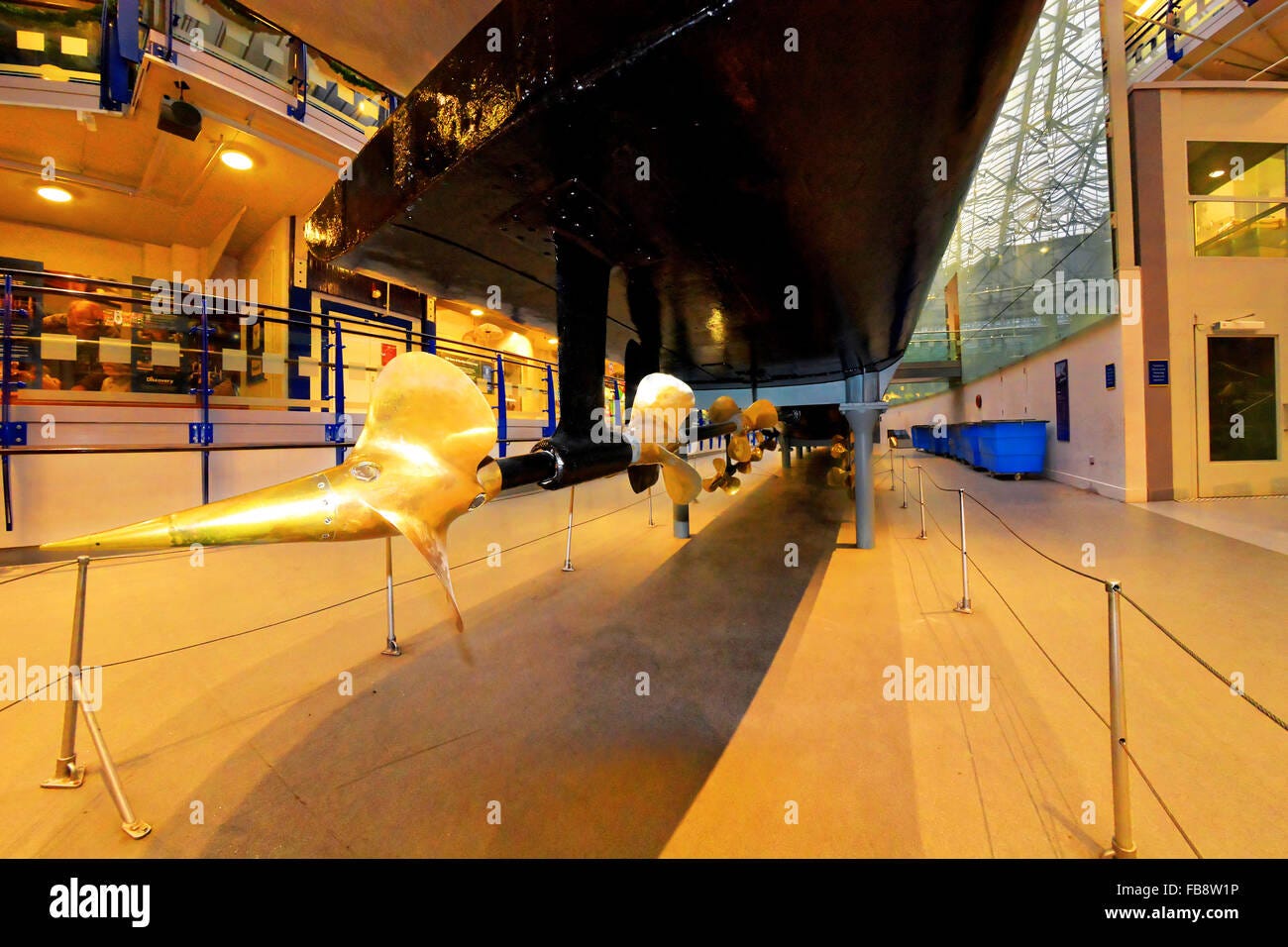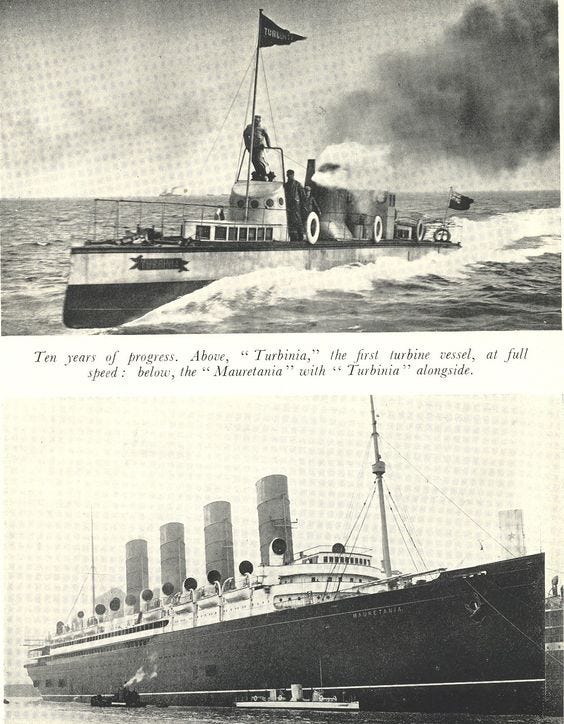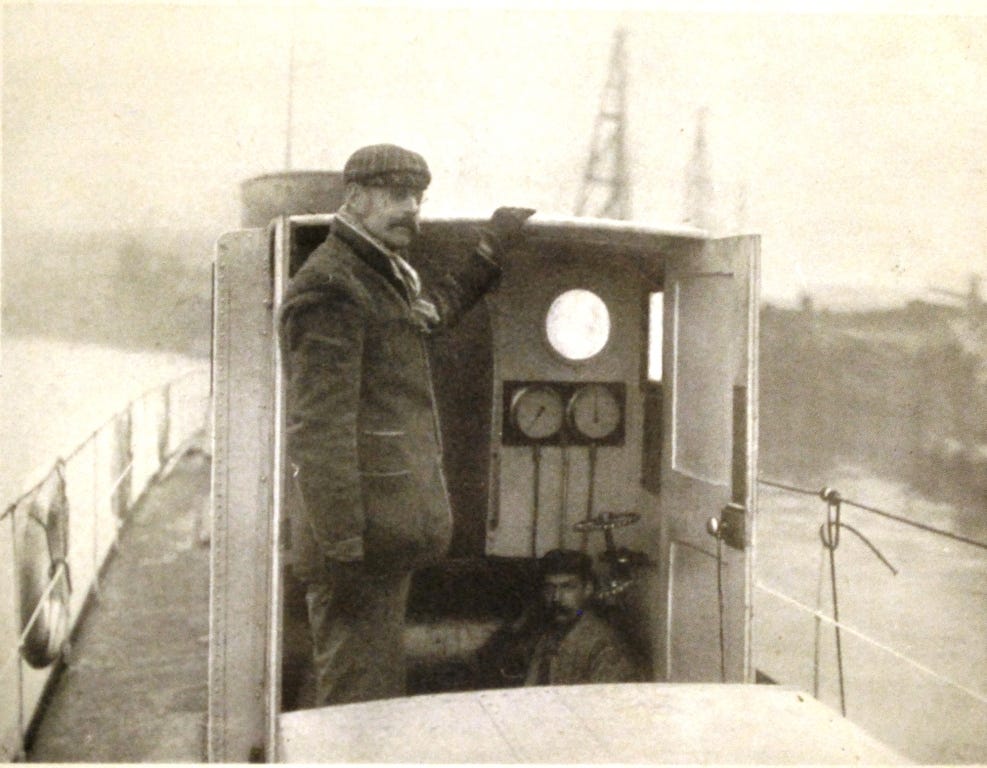Once Upon a Tyne there was a dude. Dude’s name was Charles Parsons and eventually dude would be known as Sir Charles Parsons. Pre-Sir Charles Parsons was a Irish engineer who came from a family of engineers and mathematicians. Parsons did a lot of work in the development of the compounded steam turbine and would eventually found the Parsons Marine Steam Turbine Company in the English town of Newcastle Upon-Tyne.
Water will absorb and store a butt load of energy that can be used to produce work and power. At atmospheric pressure, water expands 1700 times its original volume when converted into steam. If water is heated in a sealed container then more heat can be added without water changing state to steam, however there is an increase in the pressure of the water being heated. The higher the temperature then the higher pressure inside the sealed container, which when released in a controlled (or uncontrolled for that matter) manner can be converted into a stupid amount of power.
In order to make use of all of this heat and pressure, thermal systems are designed and manufactured to release the energy stored in the working fluid known, which is steam in this discussion. These thermal systems operate on differences of pressures and temperatures. High pressure fluid will flow to an area of lower pressure and depending on the fluid, a great amount of mechanical force can be created. Steam engines operate on this principle. High pressure steam is admitted into a cylinder. The cylinder is sealed on one end by a cover and is closed off on the other end by a piston. The piston has steam pressure on one side and atmospheric pressure on the other. The higher pressure steam pushes the piston towards the area of lower pressure as it expands to equal that of atmospheric pressure. In doing so, heat is converted into work and the temperature of the steam drops until the steam has turned back into water vapor. At this point, the water vapor is either exhausted to the atmosphere or is condensed back to water and reused by the system.
Steam turbines work the same way except that instead of a piston, steam either pushes a bucket shaped blade that is attached to a shaft or the steam flows over a aerofoil shaped blade, which pushes the blade and rotates the shaft or through a combination of these two methods. Steam turbines are more efficient at higher steam pressures but aren’t really useful if all of the steam is used at once. In order to get the most energy out of volume of steam in a controlled way, steam is allowed to expanded in multiple steps, or stages. This is known as compounding. There are three general methods of compounding; pressure compounding, velocity compounding, and combination pressure-velocity compounding. Compounding has two general effects:
Steam is expanded in a controlled way across multiple stages, the design of which is established to make better use of steam at the particular pressure/temperature point in the process.
The speed of the turbine is reduced with each stage of compounding. This is important because the speed of the turbine must be something that is useful and manageable.
So… Compounding of reciprocating steam engines had been around for a while but the turbine was a new thing and had a great amount of potential that wasn’t yet realized. Parsons was the guy that really sorted a lot of this stuff out in regards to turbines.
C.A. Parsons and Company was founded in 1887 to design, build, and sell turbo-generators for electric power generation, many of which were used by the Royal Navy but he had bigger ideas than just building turbo-generators sets. In 1894, Parsons had the steam yacht Turbinia built. He wanted to demonstrate the awesomeness of the turbine as a form of propulsion to the Royal Navy and the Navy agreed to check out this new thing that Parsons had created.
And… Turbinia sucked. It could only make less than 20 knots, which wasn’t impressive in any kind of way. The single turbine spun too fast and created tons cavitation and vibrations, but didn’t really do anything more than that, other than embarrass Parsons. The Navy guys left convinced that this new thing was a not worthy of propelling the mighty Royal Navy and that the old tried and true reciprocating engines of the time was the way to go. So Parsons took his stupid boat back to the shop and after a couple pints of Guinness, got to work figuring out what went wrong.

The biggest issue was that the turbine spun too fast for the propeller, causing cavitation, which resulted in the creation of vibrations and noise instead of useful work. He had to slow the speed of the turbine down and figure out how to solve the issue of cavitation. Screw propellers weren’t new at this point but the engineering and science behind them is incredibly complex and wasn’t really understood at the time, and is still being developed today. Parsons did much to further the understanding of propellers as he went about figuring out how to make Turbinia a success.
Cavitation is the formation of bubbles along the leading edge of a propeller as it turns through the water. The bubbles are created by a low pressure area forming on the front edge of the propeller and when the bubbles flow along the blade, they collapse and create small pressure waves. The more bubbles created, the more pressure waves created.
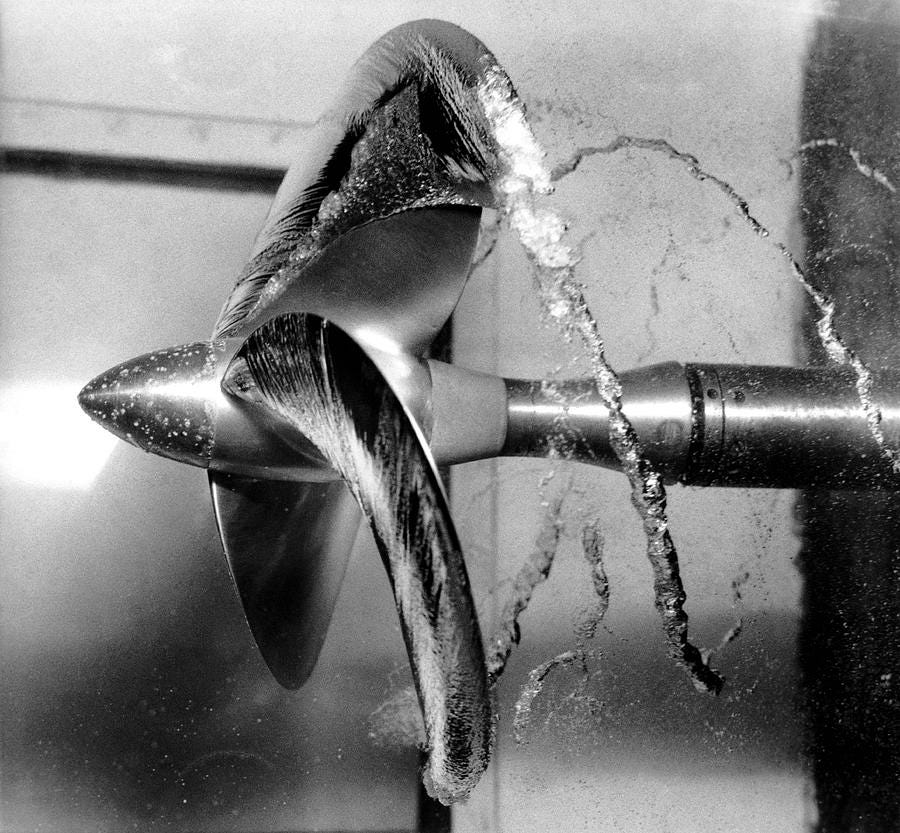
Parsons resolved these issues by expanding the steam across three multi-stage axial flow turbines and adding three redesigned propellers to each of the shafts driven by the turbines. Three shafts and nine propellers later, he finally had a ringer and it was time to show the new and improved Turbinia to the Admiralty. Only this time the Admiralty wasn’t buying the magic that Parsons was trying to bring. They had made up their mind about these new turbines and just simply wasn’t interested.
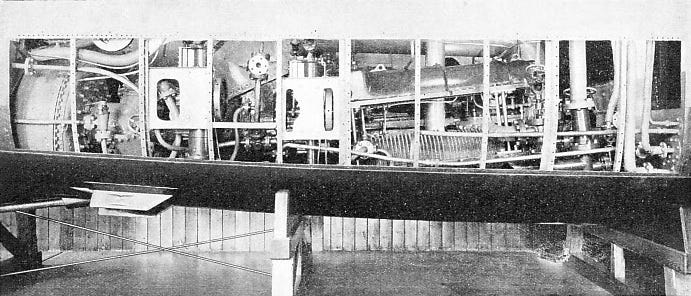
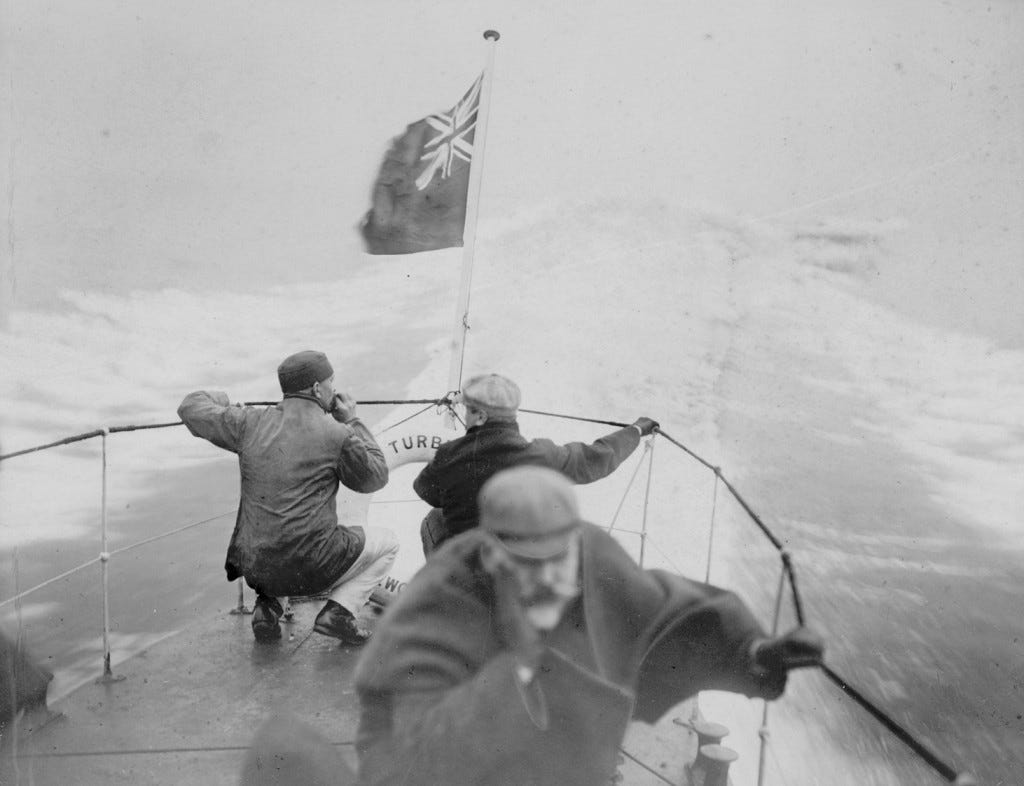
Well so now what… He knew the idea worked and he knew that he had to get the attention of the important people of the time, the Royalty, and it just so happened that an opportunity was just about to happen. June of 1897 was the Diamond Jubilee of Queen Victoria and all the cool people would be there to watch the Fleet Review of the Royal Navy; basically a parade of the whole freakin’ Navy and merchant fleet so that the Prince of Wales and Admiralty could pat themselves on the back and congratulate each other on how awesome they were.
Parsons decided that it was time to go big or go home, even at the risk of being arrested, and let the Turbinia off of her leash… Parsons and crew went blasting through the parade at over 34 knots which, suffice to say, caught the attention of the Prince of Wales, Admiralty, and whoever else was there. At the time, 34 knots was unheard of and is still pretty fast for a vessel over 100 foot long.
Well the Admiralty got a case of the mater face and ordered some boats to catch the Turbinia but nothing could. Turbinia spanked everything that the Admiralty had to throw at her, but the Prince of Wales thought Turbinia a pretty cool thing and wanted to know more about the vessel. Parsons took a chance and succeeded. Later that year, Parsons Marine Steam Turbine Company was formed and he started producing steam propulsion turbines for the Royal Navy. The first ships built using turbines were a couple of destroyers, HMS Viper and HMS Cobra which paved the way for the biggest change to naval warfare since the Monitor and Virginia duked it out at the 1862 Battle of Hampton Roads. HMS Dreadnought was launched in 1906 and is the first ship that we would recognize as the “modern” battleship with rotating turrets and using Parsons turbines for propulsion.
Not only did the Royal Navy adopt Parsons turbines, but so did the ocean liner companies Cunard and White Star Line. Cunard’s Mauritania class ocean liners were built using Parsons turbines and were among the fastest ships in the world at the time, and the White Star Line installed one turbine, that utilized the exhaust steam of the monster sized triple expansion engines, on the Olympic class ships as a way of increasing overall plant efficiency. Eventually, as the manufacturing capabilities became more common, turbines took over as the chief form of propulsion and power generation through out the world.
The US Navy made the switch to steam turbines and installed Parsons made turbines in several of the battleships built in the early 1900’s, the most famous of which being USS Arizona, until General Electric and Westinghouse figured out how to make them.
Much of our modern world is powered by steam turbine and came about because of one dude that believed so much in what he was doing that he was willing to risk everything to prove himself.




